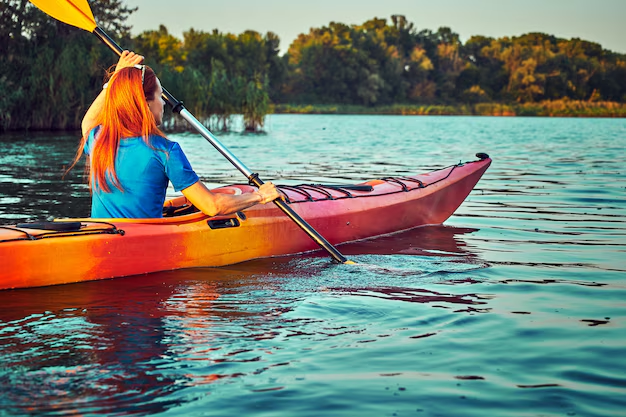Securing Your Adventure: How to Safely Strap a Kayak to Your Roof Rack
Imagine driving along a sun-drenched coastal road, with your kayak safely fastened to the roof of your car, ready for a day of aquatic adventure. Properly strapping your kayak ensures both safety and peace of mind, whether you're traversing city streets or winding mountain roads. Here’s how to securely strap a kayak to your roof rack and embark on your journey with confidence.
Choose the Right Equipment
Before you start, make sure you have the right equipment:
- Roof Racks: Check that your roof racks are firmly attached and can support the weight of your kayak.
- Cam Straps: Opt for cam straps instead of bungee cords, as they offer more stability and security.
- Bow and Stern Lines: These add extra stability, minimizing movement during transport.
- Foam Blocks or Kayak Cradles: For added protection, especially for longer journeys.
Stabilize the Kayak
Ensuring that your kayak is secure begins with proper positioning. Place your kayak evenly on the roof rack. Ideally, it should be centered to distribute weight evenly and align with the car’s length. This minimizes wind resistance and stress on your roof racks.
Fasten the Kayak with Cam Straps
Now, let's get into the nitty-gritty of securing your kayak:
- Loop the Strap: Thread one end of the cam strap under the crossbar on the opposite side of the kayak, then back over the kayak to the same side. Repeat on the other side.
- Tighten the Strap: Pull the strap through the cam buckle and tighten it until the kayak is secure. Avoid over-tightening, which can damage both the kayak and the roof rack.
- Check the Balance: Ensure that the kayak does not shift easily. Carefully check that the straps are tight but not damaging your equipment.
Secure with Bow and Stern Lines
For additional security, attach bow and stern lines to the front and rear of your car. This step provides extra stability and reduces the kayak’s movement:
- Attach the Line: Secure one end of the line to the kayak's grab handle and the other to a suitable anchor point on your vehicle's frame.
- Ensure Tension: The lines should be taut but not so tight that they stress the kayak’s material.
Perform a Safety Check
Before hitting the road, conduct a thorough check to ensure everything is securely fastened:
- Shake the kayak gently to confirm it doesn’t move.
- Double-check all strap tension and line connections.
- Look for any signs of wear or points of friction that might cause damage.
Transporting a kayak safely doesn't just protect your gear; it protects other road users too. Once you’ve mastered this routine, you’ll find it part and parcel of your water-bound excursions. Getting your kayak safely to the destination is just the start of the adventure.
Now, you might wonder, how does this relate to financial assistance or resources? Much like our approach to securely transporting your kayak, navigating financial waters requires preparation, the right tools, and ensuring your stability. Whether you're exploring educational grants or needing financial respite, knowing the options available can transform your journey.
Below is a helpful list of resources designed to support you:
Explore Financial and Educational Resources
- 🏦 Government Aid Programs: Discover federal and state programs designed to provide economic support.
- 💳 Credit Card Solutions: Learn about low-interest credit cards or balance transfer options to manage debt effectively.
- 🎓 Educational Grants: Find grants and scholarships to ease the financial burden of further education.
- 🏠 Debt Relief Options: Explore paths to negotiate or consolidate debt, bringing peace of mind.
- 📚 Career Development Courses: Enhance your skills with online courses that offer financial aid and scholarships.
Embarking on the right financial path, just like securing your kayak, paves the way for smooth sailing ahead.
